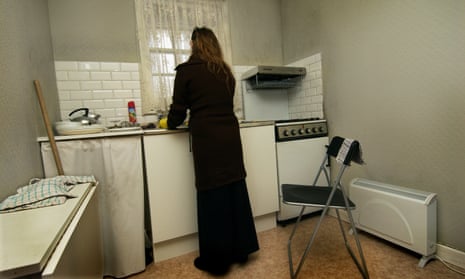
‘Complex. Unsettling. Creepy.’ Jarvis Cocker, Colm Tóibín and more on the disturbing genius of Artangel
From prison cells to department stores, for the past 30 years the visionary commissioning body has created unforgettable artworks in unlikely spaces. Famous fans pick their favourite works
Asolitary figure crossing between three Glasgow tower blocks on a narrow metal wire 90 metres up. A converted library, with ice and water instead of books, looking out at the south-west coast of Iceland. A 1,000-year-old musical composition projected across the Thames in a beam of light …
Nothing is too ambitious or outlandish for Artangel, the organisation that has spent 30 years bringing unpredictable art to unexpected locations in the UK and beyond. I have spent the past few weeks chatting with creatives about their favourite projects – and the words that keep coming up are “unforgettable”, “bold”, “wild” and “profound”. Artangel’s achievements are inextricably linked with James Lingwood and Michael Morris, who in 1991 took over the charitable trust established by the art historian Roger Took in 1985. “It would never have happened without them,” artist Michael Craig-Martin says. “What they’ve invented is extraordinary – an entirely different realm of projects not found in galleries or museums.”
The duo transformed Artangel into the visionary commissioning body it is today. Working with artists, writers, composers, film-makers, choreographers and performers, they pushed the boundaries of what art is, how we experience it, and where it appears, sometimes in derelict sites awaiting renovation or razing. Most Artangel projects are site-specific and ephemeral. Many are years in the making. Shifting the focus away from the static-ness of public art, they examine art production itself and the relationship between what’s presented and where.
Now, with Lingwood and Morris stepping down after three decades, we have reached the end of an extraordinary era. As the duo are succeeded by Mariam Zulfiqar, they leave their final hurrah: a matrix of moving images by New York-based artist Sarah Sze, located within a defunct Victorian waiting room above Peckham Rye station in London. I highly recommend a visit. But for now, let’s look back at some of the outgoing directors’ greatest hits.
‘There was a man upstairs in the shower masturbating’
Writer Colm Tóibín on Die Familie Schneider by Gregor Schneider, at 14 and 16 Walden Street, London (2004)
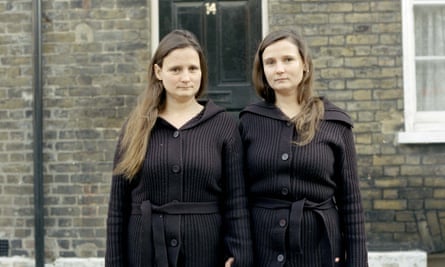
I happened to be in London and went with my friend, the writer Andrew O’Hagan, to these two houses in the East End. We were given two keys and told we could go in. I went into one and Andrew went into the other. The first was dingy; it hadn’t been redecorated in a long time. I don’t know where the eeriness came from, but there was something unsettling about the interior even before I saw any of the people.
There was a middle-aged woman at a sink washing dishes. She paid no attention to me. Upstairs, in the bathroom, there was a man in the shower masturbating. In a bedroom, I saw a man’s leg sticking out from under the bed. I couldn’t tell how these people were related or why they were here. It was, I supposed, their house. If someone had told me that a murder had been committed in these very rooms, and not too long before, I wouldn’t have been surprised. I cannot, to this day, pinpoint a single object or colour or texture that unsettled me. But something did.
I went outside and met Andrew. We didn’t speak (that might have been pre-arranged) and exchanged keys. I was already freaked out. I think the fact that no one in the first house registered my presence – I was like a ghost to them – helped to make me uneasy. But I became more so when I saw the same people doing the same thing in the same house, except it was the one next door.
What was strange was how subtle all this was – no big statements or funny noises, no one acting out any big drama – but the drama that came from it was on a large scale. I can’t sum it up because whatever way the houses were designed, whatever way the people in them behaved, the result was complex. Unsettling. Creepy. The fact that I don’t understand what I felt makes it more satisfying and allows it to linger in the memory, as if a part of it might still lodge in the nervous system after all this time.
‘I bought a mask for £3. I see it whenever I have a bath’
Pop star and broadcaster Jarvis Cocker on Miranda July’s Open to the World, an interfaith charity shop at Selfridges, London (2017)

I’ve been to a lot of jumble sales and charity shops in my life, and I thought it was interesting that they were trying to create an artwork based around that. I liked the idea that July had invited four different religious charities to take part – Christian, Jewish, Buddhist and Muslim – and that she’d been and selected the stuff herself. Also, it’s an unlikely location for a shop full of secondhand goods, on the third floor of Selfridges on Oxford Street, at the heart of a very different, upmarket kind of shop, surrounded by luxury brands.
I went on my own. I’ve always been a lone charity-shop shopper. The first person I saw when I got there was David Byrne of Talking Heads. I’d never met him before, but I said hello. It was immediately recognisable as a charity shop, with racks and mannequins and fluorescent lights. July was very involved, almost operating the till. I think she’s someone who is au fait with thrift stores, and had put together interesting combinations – clothes, costume jewellery, books by women, films. I bought a couple of bits, including a weird metal mask that’s hanging in my bathroom in Paris. I see it every time I have a bath. It’s still got the label hanging off it. It was only £3. I thought it was a bargain.
‘They had readings of Oscar Wilde in the prison chapel’
Writer Kamila Shamsie on Inside: Artists and Writers in Reading Prison (2016)
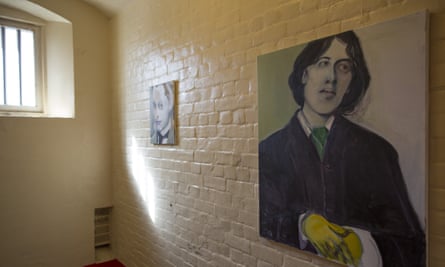
I ended up going to Inside four times. I remember that sensation of it being a prison: the coldness and bleakness, the echoing footsteps on the stairs, those identical cells. The first thing I saw were photographs from the prison records of people who’d been incarcerated, some incredibly young, and then at the end you had to pass by the execution block – startling reminders of what went on there.
There was Oscar Wilde’s cell: a tiny space, with some of the books he had with him, when he was ultimately allowed to have books. In another cell, there was an audio recording of Gillian Slovo writing a letter to her mother, the activist Ruth First, who was imprisoned in South Africa and later assassinated by the apartheid regime. In another, the Colombian artist Doris Salcedo created tables with earth on them, and grass growing out of the earth. It was a memorial space to the disappeared of Argentina who didn’t have graves. Because I went back repeatedly over the weeks, I could see the grass growing, which was incredibly moving.
The reason I kept going back – other than the fact it was amazing – was because every week they had readings of Wilde’s De Profundis in the prison chapel. It was deeply wonderful. Maxine Peake managed to bring out the lightness and humour, Ralph Fiennes the lyricism. Ben Whishaw was somehow the most thoughtful and reflective. But the really astonishing thing was that the week I heard Peake reading was the week the government finally announced a posthumous pardon for men convicted under anti-homosexuality laws. And so, obviously, to be in the place where Wilde was imprisoned for that – listening to his letters – felt strange and spooky. As if the world we were living in seemed to reach out its hands to him in that cell.
‘It was satisfying, nourishing, and left me slightly jealous’
Artist Tacita Dean on The Two Eyes Are Not Brothers by Ben Rivers, in what was once the BBC drama block at Television Centre, London (2015)

This happened in some old, deserted BBC studios, a place that in a way was already occupied in my imagination – because, as a kid in the UK, I probably watched many things that were made there. So it was an exciting setting, even though it was deserted. I remember encountering all these different films Ben Rivers had made, which were wonderful. I spent a long time there appreciating both the works and the fact that film was being shown in this way.
It was a multi-screen installation and you wandered around trying to find the films. There were five, projected in interconnecting plywood structures and spaces made from recycled BBC sets. It was mostly raw footage shot in different parts of Morocco – the Atlas Mountains and desert – on the film sets of two other film-makers, Shezad Dawood and Oliver Laxe. So it was sort of a film about film-making. The landscape looked futuristic.
after newsletter promotion
It was immensely satisfying, nourishing. I was slightly jealous, in a good way, thinking: “Oh my god, I rate this. It’s something I respect.” A sweet envy. But also I can’t separate the work from the location, which is what Artangel is all about. It’s almost a pilgrimage. You’ve actually gone on a journey.
‘I couldn’t believe this was possible or allowed’
Theatre-maker Felix Barrett on HG, designed by Hans Peter Kuhn and directed/performed by Robert Wilson in the Clink Street Vaults, London (1995)
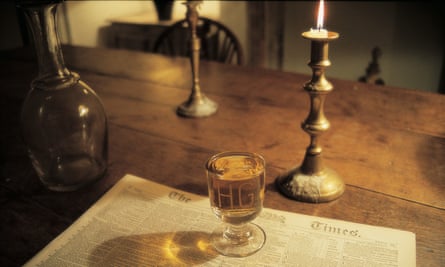
I went to see HG on a school trip when I was 17. At the end, when everyone came out, my teacher had to go back in and find me because I was so entranced. I couldn’t believe the density of the atmosphere, the breadth and scale of the work. It was shrouded in darkness, with an incredible soundtrack, leading audiences through the vaults, deep and dank, underground. It was almost stifling. There was an abandoned Georgian dining room, with a banquet table decked out with food being left to rot, and a long, pitch-black corridor with a pinprick of light at the end. As you walked along, you felt the cobbles underfoot shift to sand.
There wasn’t much explanation, so it was up to audiences to make sense of it. This was the first time art had triggered adrenaline in me. It had a visceral impact – and I just couldn’t believe that was possible or allowed. For me, it marked a seismic change in the idea of what art could be. It made me realise that it’s about depth of feeling. When you’re sitting in a theatre or a cinema, your body is passive. This was the opposite. You were physically active, hunting out the installations, navigating the pathways. It used a completely different part of the brain.
I owe my career to HG. First, because I could feel the presence of the performers, but I couldn’t quite see them. As the artistic director of Punchdrunk, I’ve dedicated my life to putting performers into these sorts of worlds. It’s almost like picking up where they left off. But also because, when I went back with my family the next weekend, word had got out – and I felt that being surrounded by others tarnished the experience. It made me wonder how you could remove the audience, and that’s why Punchdrunk uses masks. The audience becomes a part of the aesthetic and you’re a sole observer moving around a sea of anonymous faces.
‘It sent me down a deep rabbit-hole for five years’
Writer Adelle Stripe on The Arbor by Clio Barnard, premiered at Tribeca film festival, New York (2010)

Like all great art, The Arbor left me with many unanswered questions. It also provoked my curiosity about Andrea Dunbar, the writer of three raw plays, one of which gives this film – a blend of documentary and fictionalised elements – its name. I believe Dunbar to be one of the unsung heroes of northern culture and that was the starting point for my PhD. So without this, I wouldn’t have spent five years buried in archives and libraries researching Dunbar’s life and work – nor written Black Teeth and a Brilliant Smile, my book inspired by her life. That a film can send you down such a deep rabbit-hole is testament to its power.
I was profoundly moved by the conflicting memories of Dunbar’s daughters, Lisa and Lorraine. Lisa recalls being locked in her bedroom by Dunbar as a little girl, then setting fire to the mattress. Lorraine remembered it differently, and I’m sure Dunbar would have had her own version. It’s up to us to make up our own minds. Barnard’s skill was to present these multiple accounts in a way that didn’t force an agenda, and to use archive footage to let the story of what happened before and after Dunbar’s death unfold in a compelling way.
I would argue that The Arbor is one of the finest films of recent times. It pushed at the boundaries of how to tell the story of a life. A traditional documentary might not have carried so much emotion and gravitas. The skilled performances of Christine Bottomley as Lisa and Manjinder Virk as Lorraine added weight. It’s one of those films that sticks in your head and resonates – for days, months and years.
‘There was a move to make it permanent. I’m glad it didn’t happen’
Artist Michael Craig-Martin on House by Rachel Whiteread on Grove Road in London (1993-94)
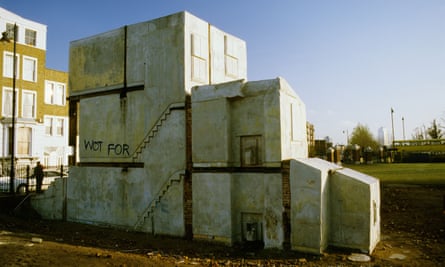
This was one of the most amazing things I saw over many years in London. Whiteread was known for making casts of the insides of things, and when a row of terrace houses was being torn down in the East End, she worked on one of the houses before it disappeared. The house was then stripped away and what was left was the incredible ghost-like interior standing alone in what had become a kind of field.
It was an extraordinary redefinition of what we mean by public work. A monument to an ordinary house in an ordinary neighbourhood. Something everybody could identify. You looked and you understood it. You could have sophisticated ideas about art or simply be a neighbour and be touched by what you were seeing.
The original intention was that it would be temporary, something for a specific time and a specific place. But it was so loved and respected that there was a move to make it permanent, which didn’t happen. I liked it that way: I wanted it to remain in my memory as this perfect thing, whereas in reality it wasn’t built to last for ever – it would eventually fall apart, be vandalised. I’ve made a lot of work myself that has had a temporary public life. But some pieces are just ever ripe. This seems to be one. It struck every note correctly.
… there is a good reason why not to support the Guardian.
Not everyone can afford to pay for news right now. That's why we keep our journalism open for everyone to read, including in Portugal. If this is you, please continue to read for free.
But if you are able to, then there are three good reasons to support us today.
1. Our quality, investigative journalism is a scrutinising force at a time when the rich and powerful are getting away with more and more
2. We are independent and have no billionaire owner pulling the strings, so your money directly powers our reporting
3. It doesn’t cost much, and takes less time than it took to read this message
Help power the Guardian’s journalism for the years to come, whether with a small sum or a larger one. If you can, please support us on a monthly basis from just €2. It takes less than a minute to set up, and you can rest assured that you’re making a big impact every single month in support of open, independent journalism. Thank you.
Most viewed
South Koreans become a year or two younger as country changes system for counting ages
- LiveThe Ashes 2023: England v Australia, second Test, day one – live
- LiveRussia-Ukraine war live: Kramatorsk strike death toll rises to 10; Nato to strengthen eastern defences
Terrible ideas, tedious shows, zero talent: Meghan and Harry’s trainwreck podcast career
I looked for happiness in the world’s most contented nation – and learned the importance of pessimismLucy Pearson

























No comments:
Post a Comment